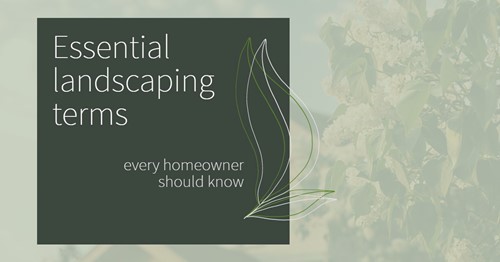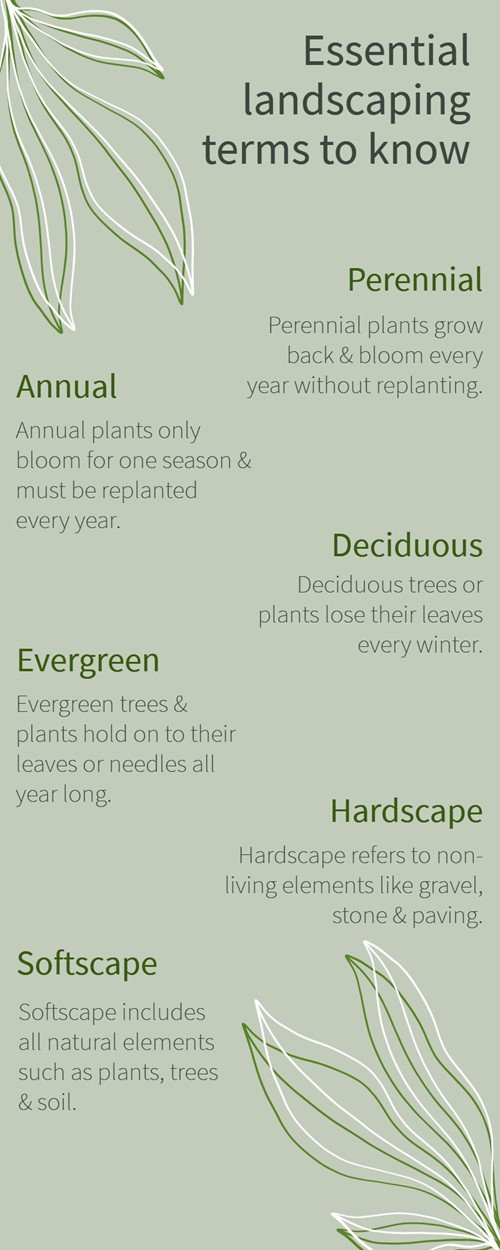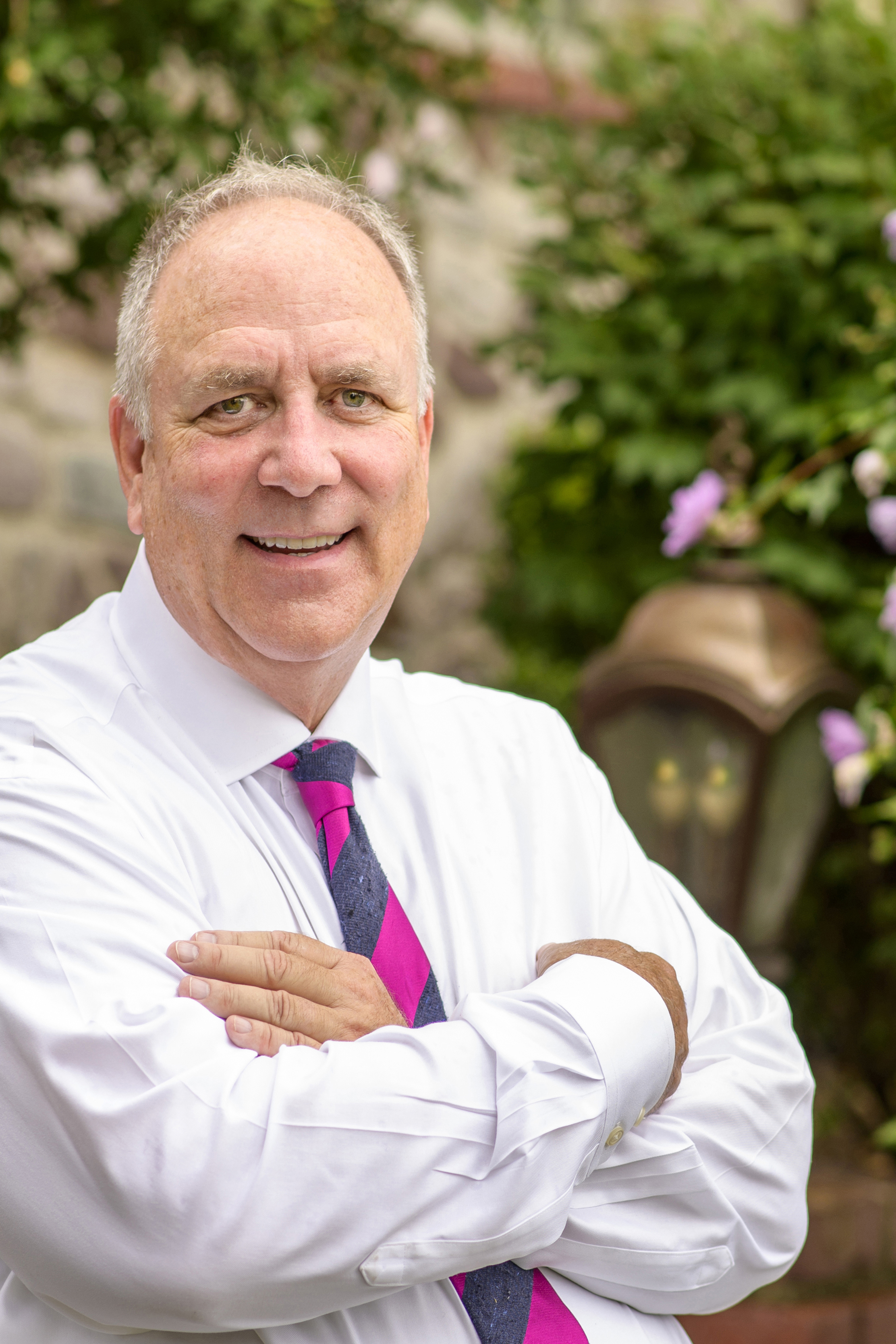Email: Lynn@LynnButterfield.com

If you’re just getting started with landscaping, it can seem as if it has a language all its own. While landscape designers use specialized terminology to describe the ins and outs of their work, most of the important language overlaps with gardening, architecture and real estate. This means you might already know more about landscaping styles and features than you think!
Regardless of your experience level or goals, knowing the right terms can help you understand the key elements of landscaping. To help, here is a guide to some of the most important terms to know:
Perennial is a term used to describe plants that only need to be planted once to grow and bloom every year. Perennial plants and flowers can last multiple years and even decades with the right conditions and care. Well-established perennials are low maintenance landscape features that can increase your property value, whether located in your front yard or backyard.
As a contrast to perennial plants, annual plants only last one season. This type of plant includes many of the most popular flowering shrubs for increasing curb appeal in outdoor spaces. Annuals make a great landscaping choice for homeowners who like to change the aesthetics of their property’s landscaping regularly.
Deciduous trees or shrubs lose their leaves every winter. However, unlike annual flowers, they don’t need to be replanted every year. Instead, deciduous trees go dormant during the cold season and wake up again in the spring with new growth. Deciduous trees are popular landscaping features for creating shade and adding visual interest to an outdoor space.
Evergreen trees hold on to their leaves or needles all year long. Some popular evergreen shrubs used in landscaping are boxwood, arborvitae and holly. Tall trees like firs, spruce and pine are perfect for adding year-round privacy to landscape design.
Some other evergreen trees like Southern magnolia produce flowers during the spring and summer, but keep their rich green foliage all year.
Hardscape is a term used in landscaping and exterior design to mean any of the non-living or human-made elements in the landscape. Architectural features like paved patios count as hardscape elements, as do retaining walls, pathways and decorative rock features. Hardscape also includes the fixed features surrounding a swimming pool, permanent fire pit or zen garden.
In landscaping language, the softscape refers to all the living elements in an outdoor space. This includes trees, shrubs, flowers, grass and other vegetation. Depending on the style of landscape architecture, softscape elements can serve as a focal point or simply tie the design together.

Whether your goals are to impress potential buyers with amazing curb appeal, or create a personal oasis in your backyard, knowing these key landscaping terms will help you on your journey.

Lynn Butterfield is an Associate Broker at Coldwell Banker and is a Certified Real Estate Negotiator. Mr. Butterfield has 41 years of experience in real estate sales and development. His vast experience ranges from luxury sales through commercial sales and leasing. Perhaps more importantly, he focuses his attention on client success, whether he's helping someone buy their first home, or working with a developer seeking assistance to create and position a large project in the marketplace. One recent client said, "Working with Lynn is almost like working with a Real Estate Attorney, because he knows exactly what to look for, so you can be protected!" Another first-time home buyer just said, "I needed someone to hold my hand through this because it's the largest investment we'll ever make! I know he isn't in this just to make a quick buck. He really cares about his clients!"
Whether you're in the research phase at the beginning of your real estate search or you know exactly what you're looking for, you'll benefit from having a real estate professional by your side. He would be honored to put his real estate experience to work for you.